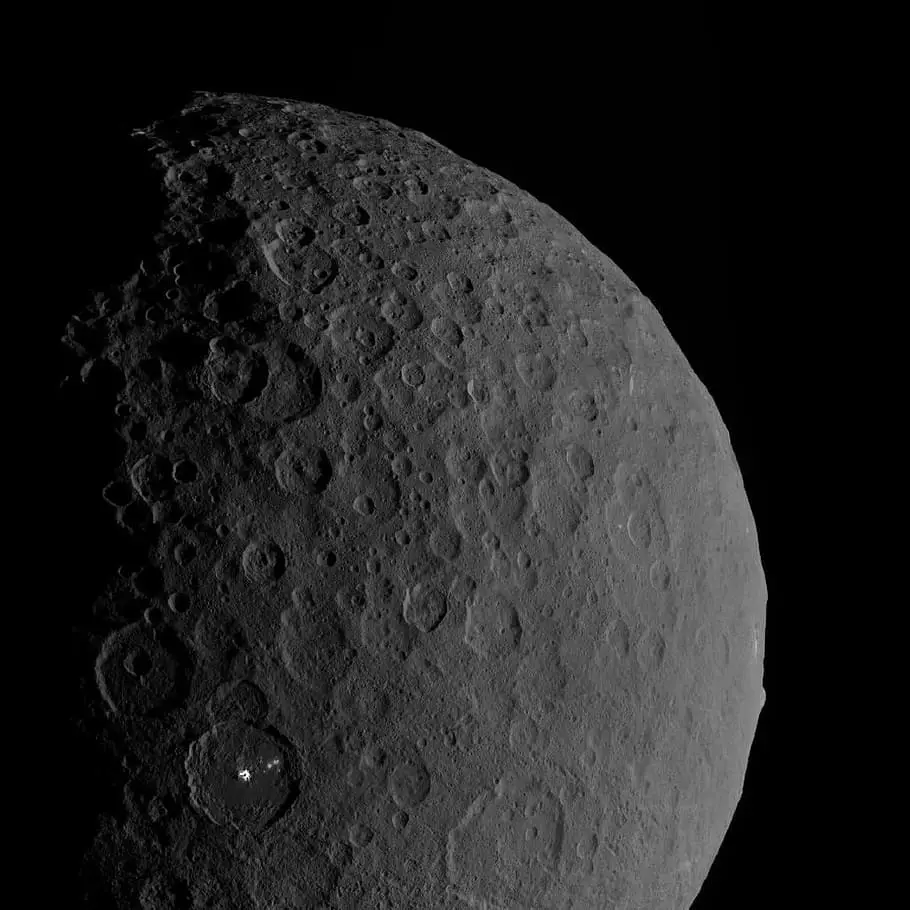Ceres, the largest object in the asteroid belt that extends from Mars to Jupiter, has long been a topic of interest for both academics and laypeople interested in astronomy. As we proceed with our investigation of the solar system and look for indications of life beyond Earth, the question of whether or not Ceres possesses oxygen will become an increasingly important one. The discovery of oxygen on this dwarf planet could have profound ramifications for our understanding of habitability and the possibility of life elsewhere in the universe because oxygen is an essential component for maintaining life as we know it.
Giuseppe Piazzi, an Italian astronomer, made the initial discovery of Ceres in the year 1801. Since that time, Ceres has been designated as a minor planet. Ceres, which is the largest object in the asteroid belt and accounts for nearly one-third of its total mass, has a diameter of roughly 590 miles (940 kilometers) and measures approximately 590 miles (940 kilometers) in length. Because of its singular make-up and the intriguing qualities it possesses, exploration has focused its attention on discovering more about it.
Recent scientific research, such as that carried out by NASA’s Dawn probe, has helped elucidate some of the mysteries surrounding the composition of Ceres. In orbit around Ceres from 2015 until 2018, the Dawn mission uncovered a wealth of information regarding the surface, geology, and composition of the dwarf planet Ceres. Despite the fact that it did not directly detect atmospheric gases, it did provide some insight into the possible existence of underground seas as well as the presence of water ice.
The discovery that Ceres possessed water ice was one of the most important results obtained from the Dawn expedition. The equipment on board the spacecraft noticed bright patches on the planet’s surface, which turned out to be frozen water deposits in several different regions. This new information has brought into question the existence of a deep ocean on Ceres. It has also brought into question the presence of other volatile chemicals, such as carbon dioxide and methane.
Concerning oxygen, the general opinion held by scientists at this time is that Ceres most certainly possesses some amount of oxygen, even if it does not have an atmosphere that is conducive to human respiration. Since oxygen is a highly reactive element that rapidly combines with other elements, it is more commonly found in compounds than as a free gas. This is because oxygen readily combines with other elements. On Ceres, oxygen is likely to be found in a variety of different chemical compounds. These compounds include water ice (H2O) and oxides, which are minerals.
The possibility that water ice on Ceres could serve as a source of oxygen makes its presence there one of the planet’s more intriguing features. Oxygen atoms can be liberated from water molecules by a variety of different processes, including photodissociation and chemical interactions with other substances. This indicates that even if it is possible that Ceres does not have a substantial atmosphere or a readily available supply of oxygen, the existence of water ice leaves up the prospect of oxygen being released and potentially being utilized by some forms of life, if they exist. This is true even though Ceres may not have a substantial atmosphere or a readily available supply of oxygen.
Even though the precise levels of oxygen on Ceres and their distribution are still unknown, researchers are continuing their work and planning future expeditions to the dwarf planet in an effort to learn more about it. Both the possibility that Ceres could be inhabited and the presence of life in any form, even in its most basic microbe-based form, are of enormous interest to scientists. We can improve our understanding of the circumstances necessary for life to originate and flourish in harsh environments if we have a better grasp of the chemical make-up of oxygen on Ceres as well as its probable abundance there.
In conclusion, the dwarf planet Ceres, which is found in the asteroid belt, most likely possesses oxygen in the form of a variety of chemical compounds. These components include water ice and minerals. The presence of oxygen in these compounds presents exciting possibilities for the existence of life, particularly when considering the possibility of a subterranean ocean, even though it is possible that this planet does not have an atmosphere that is capable of supporting life like Earth has. The continuation of exploration and study will offer us with additional insights into the composition of Ceres and its potential for habitability. This will get us closer to finding an answer to the age-old question of whether or not life exists beyond our home planet.
![]()
